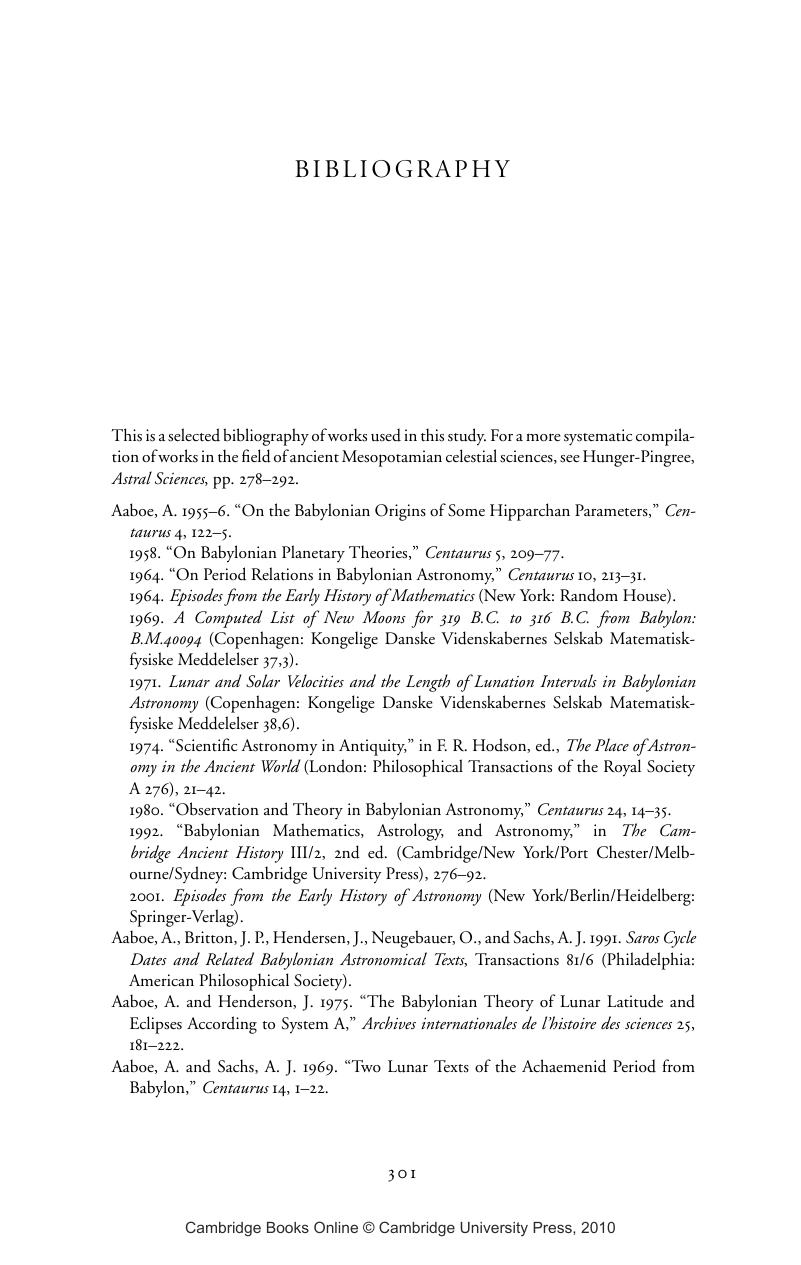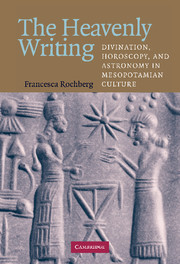Book contents
- Frontmatter
- Contents
- Preface
- Acknowledgments
- Abbreviations
- Chronological References and Akkadian and Astronomical Terminology
- The Heavenly Writing
- Prologue
- 1 The Historiography of Mesopotamian Science
- 2 Celestial Divination in Context
- 3 Personal Celestial Divination: The Babylonian Horoscopes
- 4 Sources for Horoscopes in Astronomical Texts
- 5 Sources for Horoscopes in the Early Astrological Tradition
- 6 The Scribes and Scholars of Mesopotamian Celestial Science
- 7 The Classification of Mesopotamian Celestial Inquiry as Science
- Epilogue
- Bibliography
- Name Index
- Subject Index
- References
Bibliography
Published online by Cambridge University Press: 08 January 2010
- Frontmatter
- Contents
- Preface
- Acknowledgments
- Abbreviations
- Chronological References and Akkadian and Astronomical Terminology
- The Heavenly Writing
- Prologue
- 1 The Historiography of Mesopotamian Science
- 2 Celestial Divination in Context
- 3 Personal Celestial Divination: The Babylonian Horoscopes
- 4 Sources for Horoscopes in Astronomical Texts
- 5 Sources for Horoscopes in the Early Astrological Tradition
- 6 The Scribes and Scholars of Mesopotamian Celestial Science
- 7 The Classification of Mesopotamian Celestial Inquiry as Science
- Epilogue
- Bibliography
- Name Index
- Subject Index
- References
Summary

- Type
- Chapter
- Information
- The Heavenly WritingDivination, Horoscopy, and Astronomy in Mesopotamian Culture, pp. 301 - 322Publisher: Cambridge University PressPrint publication year: 2004



